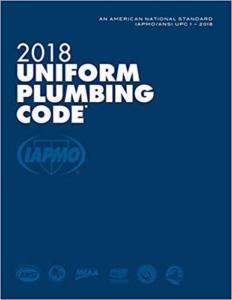2018 Uniform Plumbing Code
2018 Uniform Plumbing Code
2018 Uniform Plumbing Code (UPC) represents the most current approaches in the plumbing field. It is the sixth edition developed under the ANSI Consensus process designated as an American National Standards by the American National Standards Institute (ANSI). Contributions to the content of this code were made by every segment of the built industry, including such diverse interests as consumers, enforcing authorities, installers/maintainers, labor, manufacturers, research/standards/ testing laboratories, special experts and users.
The UPC designed to provide consumers with safe and sanitary plumbing systems while, at the same time, allowing latitude for innovation and new technologies. Key changes to the 2018 UPC include:
You can also Read Ground source heat pumps fundamentals, experiments and applications
2018 Uniform Plumbing Code Changes
- Administration
![2018 Uniform Plumbing Code]()
- Definitions
- General Regulations
- Plumbing Fixtures and Fixture Fittings
- Water Heaters
- Water Supply and Distribution
- Sanitary Drainage
- Indirect Wastes
- Vents
- Traps and Interceptors
- Storm Drainage
- Fuel Piping
- Health Care Facilities and Medical Gas and Vacuum Systems
- Firestop Protection
- Alternate Water Sources for Non potable Applications
- Non potable Rainwater Catchment (Rainwater Harvesting) Systems Referenced Standards
- A – Recommended Rules for Sizing the Water supply System
- B – Explanatory Notes on Combination Waste and Vent Systems
- C – Alternate Plumbing Systems
- D – Sizing Storm Water Drainage Systems
- E – Manufactured/Mobile Home Parks and Recreational Vehicle Parks
- F – Firefighter Breathing Air Replenishment Systems
- G – Sizing of Venting Systems
- H – Private Sewage Disposal Systems
- I – Installation Standard
- J – Combination of On door and Outdoor Combustion and Ventilation Opening Design
- K – Potable Rainwater Catchment Systems
- L – Sustainable Practices
- M – Peak Water Demand Calculator
- New product standards for plumbing fixtures such as wall hung fixtures, waste fittings, lavatories, showers, bathtubs and whirlpool bathtubs, flushometer valves, sinks and eyewash stations; and signage for single use toilet facilities
- New peak water demand method and calculator for estimating demand loads for water supply of single- and multi-family dwellings with water conserving plumbing fixtures, fixture fittings, and appliances (Appendix M).


Comments are closed.